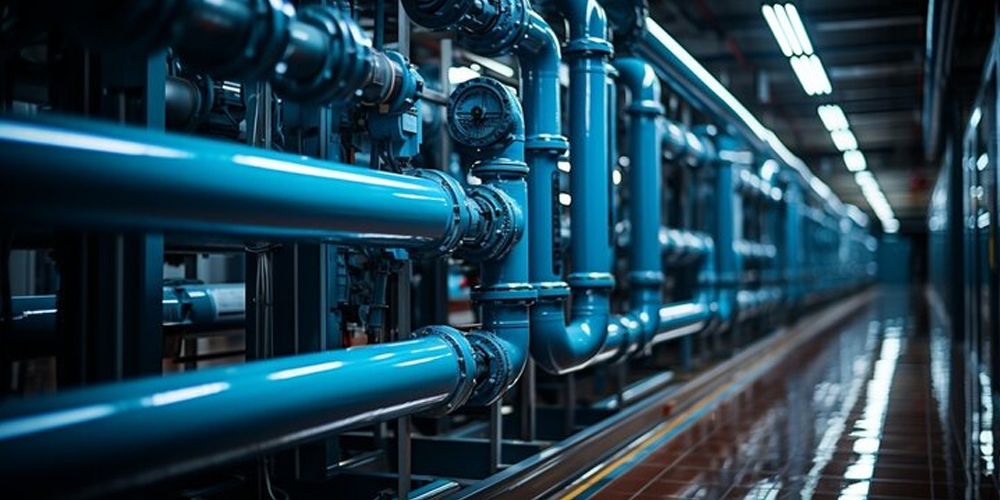
Natria dikloroisocyanurate(SDIC) estas tre efika kaj larĝ-spektra malinfektilo vaste uzata en dukto-desinfektado, precipe en trinkakvo, industria akvo kaj kloakaĵoj. Ĉi tiu artikolo ĉefe enkondukas la aplikon de SDIC en dukto -malinfektado, inkluzive de ĝia funkcia principo, malinfektaj paŝoj, avantaĝoj kaj aliaj enhavoj.
Laboranta principo de natria dikloroisocyanurate
SDIC estas potenca oksidanto, kiu povas iom post iom liberigi hipokloran acidon en akvo. Ĝi povas rapide penetri kaj oksidi la ĉelajn murojn de bakterioj, virusoj kaj algoj, igante ilin neaktivaj kaj atingante la celon de malinfektado. La liberigo de efika kloro havas malrapidan liberigan efikon, kiu povas daŭre praktiki baktericidan efikon dum longa tempo, kaj aparte taŭgas por la longtempaj malinfektaj bezonoj de dukto-sistemoj. Krome, SDIC havas bonan stabilecon sub alta temperaturmedio.
Avantaĝoj de natria dikloroisocianaro en dukto -malinfektado
Alt-efika steriligo
SDIC enhavas altan koncentriĝon de efika kloro (ĝis 90%), kiu povas rapide mortigi diversajn bakteriojn, virusojn, algojn kaj fungojn por certigi la higienon en la dukto.
Longdaŭra efiko
Ĉar ĝi enhavas cianurikan acidon, hipoklora acido povas agi sur la tubo dum longa tempo. Ĝi havas kontinuan baktericidan efikon kaj povas efike malhelpi malĉefan poluadon.
Larĝa spektra aplikebleco
Uzeblas por tuboj de diversaj materialoj, inkluzive de metalo, plasto kaj ceramiko, sen evidenta korodo.
Diversaj formoj, facile uzeblaj
SDIC estas kutime farita en pulvoro, granuloj, kiuj estas facile dissolveblaj kaj egale distribuitaj, taŭgaj por centralizita aŭ disvastigita aldono.
Preparo antaŭ purigado de tuboj
Kalkulu la bezonatan kvanton deSDIC DISINFECTANTlaŭ la diametro kaj longo de la tubo. La ĝenerala koncentriĝo estas 10-20ppm, depende de la grado de tubo-poluado.
Solva preparo
SDIC estas kutime en formo de pulvoroj aŭ granuloj. Por facileco de uzo, SDIC bezonas solviĝi en akvo kaj preparita en solvon de certa koncentriĝo. Dissolvo devas esti farita en bone ventolita areo, kaj oni devas zorgi por eviti rektan kontakton kun la haŭto.
Cirkulada malinfektado
Injektu la disinfektan solvon en la pipon kaj tenu ĝin en cirkulado por certigi, ke la malinfektanto plene kontaktas la tuban muron kaj internajn mortajn angulojn.
Flushing
Post malinfektado, lavu la pipon ĝisfunde per pura akvo por certigi, ke la postrestanta kloro -koncentriĝo plenumas sekurecajn normojn.
Antaŭzorgoj
Doza kontrolo
Evitu troan uzon por malebligi eblajn damaĝojn al la tubo aŭ efikon sur akvokvalito.
Stokado kaj Transportado
Konservu en seka, malvarmeta loko, evitu rektan sunlumon. Ne miksi kun acidoj aŭ redukti agentojn por malebligi kemiajn reagojn.
Strikte sekvu la produktan manlibron.
Sekura operacio
Portu protektajn gantojn kaj maskojn kiam vi uzas, evitu rektan kontakton kun haŭto aŭ inhalado de polvo.
Ekologia kuracado
Malŝarĝo de akvobaraĵoj devas plenumi postulojn pri mediaj protektoj por eviti poluadon al la medio.
Tipaj aplikaj scenaroj
Malinfektado de trinkakvaj duktoj:Forigu mikroorganismojn en la libro, certigu akvokvalitan sekurecon kaj malhelpu mikrobian kreskon.
Industria akva cirkulada sistemo:Kontrolu biologian malpuraĵon kaj plilongigu la servan vivon de la dukto.
Hospitalo kaj Lerneja Akvoprovizado:Certigu altajn higienajn normojn.
Tradiciaj dukto -desinfektaj metodoj inkluzivas fizikajn metodojn (kiel alta temperaturo, UV) kaj kemiaj metodoj. Kontraste,Natria dikloroisocyanurate granulojestas ideala elekto por dukto -malinfektado pro ĝia supera desinfekta agado kaj oportuna uzmetodo, kaj estas vaste favorita de diversaj industrioj.
En dukto-malinfektaj aplikoj, natria dikloroisocianurato fariĝis unu el la gravaj elektoj por ĉiuj pro sia alta efikeco kaj larĝ-spektra baktericidaj proprietoj. Nepre strikte sekvu la formalajn procedojn dum operacio kaj stokado. Se vi havas demandojn pri stokado, bonvolu konsulti vianKemia Provizanto de Akva Traktado. Ni alportos al vi profesiajn solvojn.
Afiŝotempo: Nov-12-2024
